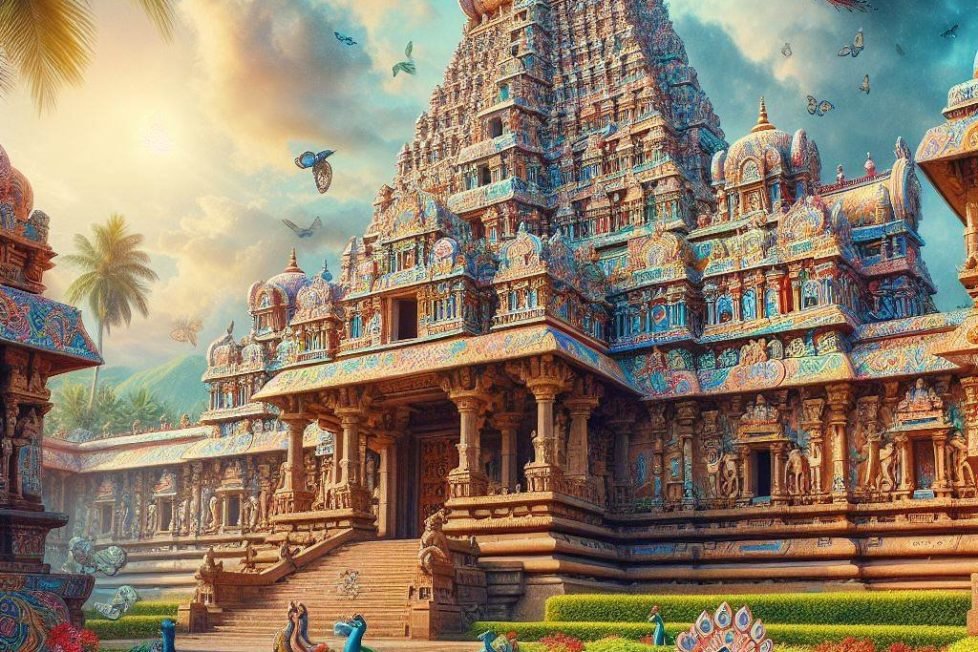The Reclaim of Civilization Ethos: The invaders and their damage


The Islamic invaders hated temples. To the invaders, these were not only an opportunity to take out wealth, gold, and silver but also impose supremacy by destroying the temple buildings, desecrating the idols, and building mosques on top of them. Sitaram Goelji, in his book ‘Hindu Temples What Happened to Them,’ documents around 2000 temples that were broken and mosques imposed on them. His death cut short the work, but it is widely estimated that this number is approximately 40,000.
Destroying the temple also enabled an invader to oppress the population by disturbing the support system and infrastructure. As the temple destructions happened, the support systems were impacted, and the famines of the Shah Jahan period are well documented in history. Aurangzeb’s handwritten order, acting on the advice of his governor, to destroy the Kashi Vishwanath temple and its school is still in existence in original.
The high level of education and awareness of the Hindus was considered a threat by the Mughals and other invaders, as well as by the British.
Several others emerged after Prithiviraj was replaced with an invader ruler in North India. By force, they started breaking the temples and plundering the wealth. The temple destruction was part of a multi-pronged strategy of imposing Islam, scaring the local population, and commencing oppression, as well as using the wealth in luxury and waste. A large number of people from the already Islamic regions made a beeline for the luxurious life of India and the possibility of snatching wealth and women.
The destruction of the temple of Bhagwan Ram by the general of Babur is historically confirmed and even mentioned in one of the works of Goswami Tulsidasji. The Hindu community kept praying at the place, and in the excavation by late Shri B.B.Lal, the temple pillars were found on which an Islamic structure was created.
After its destruction in 1526, the temple’s immediate steps for the liberation of Janmabhoomi could not occur due to the place under Mughal Rule. In 1707, upon the death of Aurangzeb, when the Muslim Nawab of Avadh (Lucknow) declared himself independent, this place came under his control, and the imposition of the Islamic system continued.
When Islamic rule was severely limited by the rise of Shivaji and Marathas, the recovery of temples started. The Marathas soon became the effective rulers of most of India. Maratha ruler Ahilyabai Holkar reclaimed many temples, including Kashi Vishwanath- though without the original Shivling and location, Peshva had the Mahakal temple remade. However, Ayodhya, being under Nawab, remained out of reach.
When the British, who came to India from an impoverished nation and were leading a lifestyle with poor hygiene and an oppressive social system, took up defaming and discrediting the Hindu religion and imposed conversion to the Evangelical faith as soon as they got into a position of power. Initially, the British tried not to intervene in religious practices, and even their coins were issued with Ma Kali and Ram Darbar on them. However, after Wellesley had created an Empire, the charter was changed by the British Parliament, and the East India Company started financing the making of Churches and bringing missionaries with a primary focus on attacking Hindu civilization and conversion.
However, their practice was to convert the mind and spread the confusion. They blamed Hindus for Child Marriages and Sati – practices that had come about due to Islamic rule and which their own act was on the wane. Wilberforce, speaking in the British Parliament, spread the misinformation that Hindus worship 330 million (instead of 33 Kinds), and Ramayana and Mahabharata are myths, and Hindu history was discredited. The worship of deities was misinterpreted as idol worship. These were incorporated in history and textbooks; missionaries preached these falsehoods globally, and their impact continues.
The British displaced the Nawab in 1857-1858, and Nihangs immediately made an effort to reclaim the place. Even in Mughal records, this place was called Masjid -Janamsthan (Mosque of the birthplace).
The Mutawali (caretaker) of the Masjid complained to the British Government in December 1858. The British installed the railings. Legal fights went on for almost a century, with Muslims losing each case but continuing the fight.
In 1949, the Idols of Ram Lalla( Child Ram) appeared there. The then Prime Minister Nehru who was not content with even the partition of India, instructed K .K.Nair the ICS officer who was the District Magistrate of Faizabad, to remove the deities. His refusal led to the wrath of Nehru. However, the resistance of various officials and the court’s involvement continued the status quo. Still, the structure that had been imposed remained.
The fight to reclaim the temple has been long and hard. It has been fertilized with blood and sweat, and that is all the more reason why the reconstruction is being celebrated.
DISCLAIMER: The author is solely responsible for the views expressed in this article. The author carries the responsibility for citing and/or licensing of images utilized within the text.
